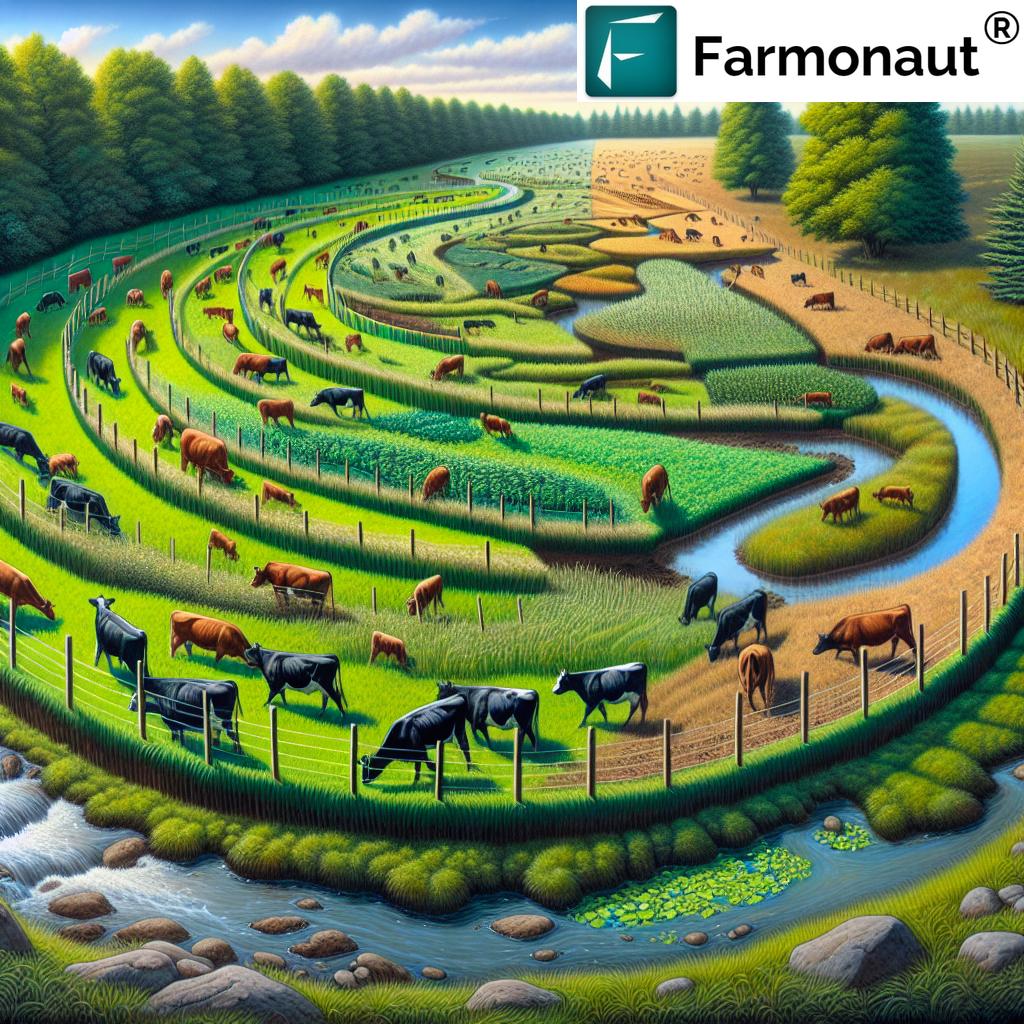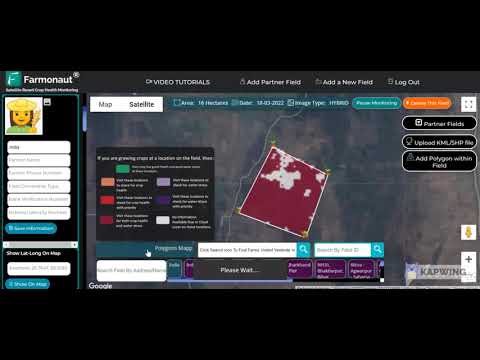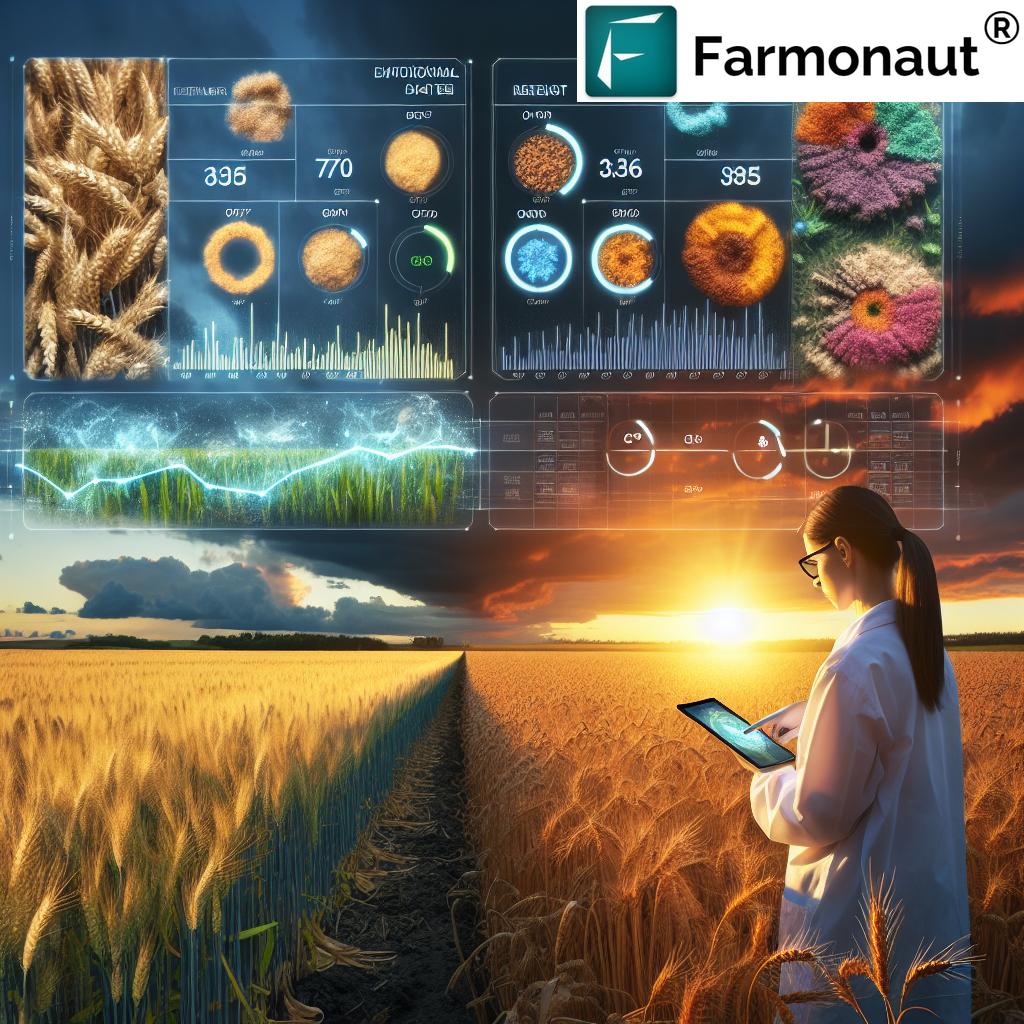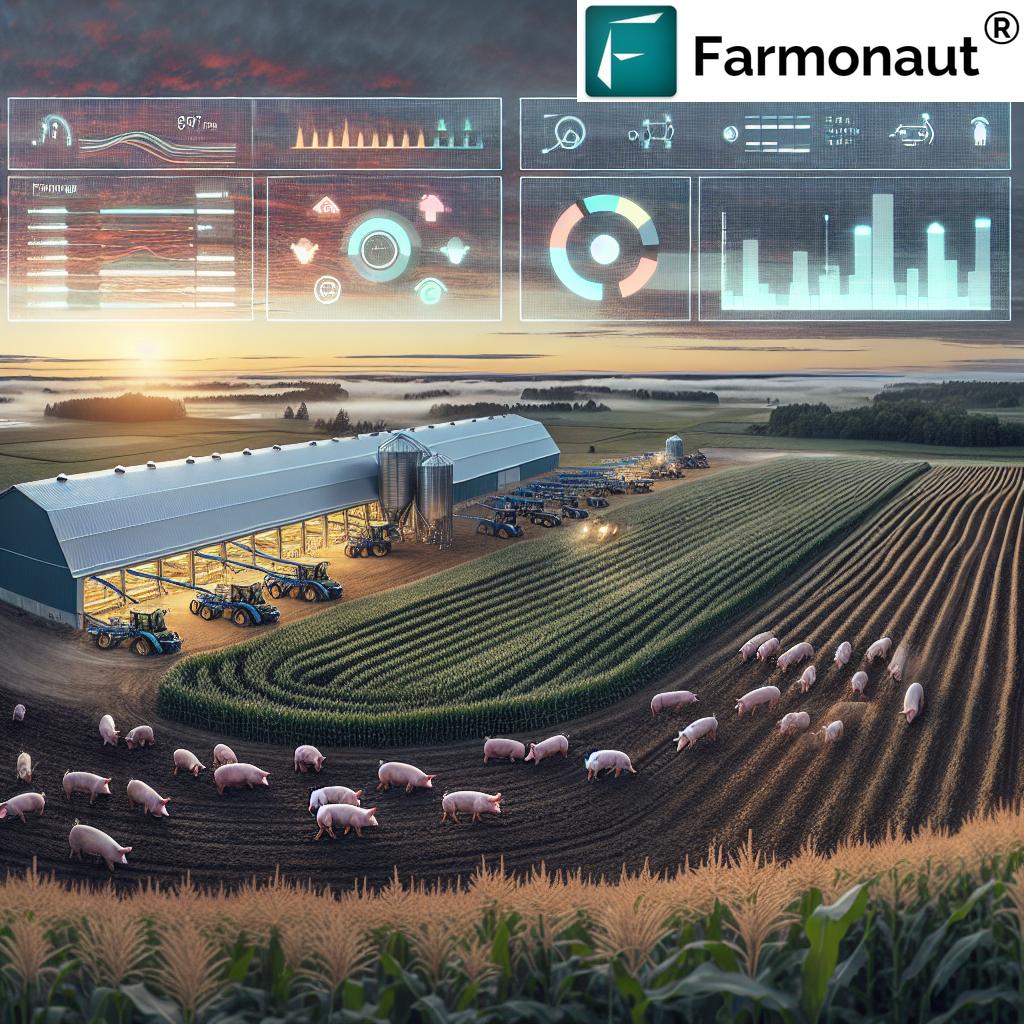Revolutionizing Pasture Management: Climate-Smart Techniques for Ontario Farmers

“Rotational grazing can increase pasture productivity by up to 200% compared to continuous grazing methods.”
Welcome to our comprehensive guide on revolutionizing pasture management with climate-smart techniques for Ontario farmers. As we navigate the challenges of modern agriculture, it’s crucial to embrace sustainable practices that not only enhance productivity but also contribute to environmental stewardship. In this blog post, we’ll explore innovative strategies discussed in the Pasture Walk Series, providing you with valuable insights to transform your farm’s performance and sustainability.
The Importance of Sustainable Pasture Management
In the heart of Ontario’s agricultural landscape, pasture management plays a pivotal role in shaping the future of farming. As stewards of the land, we recognize the need to adapt our practices to meet the demands of a changing climate while ensuring the long-term viability of our farms. Sustainable pasture management is not just a trend; it’s a necessity for the resilience of our agricultural systems and the health of our planet.
Let’s delve into the climate-smart techniques that are transforming pasture management across Ontario, from the rolling hills of Meaford to the community pastures of Melancthon and the diverse ranches of South River.
Rotational Grazing: A Cornerstone of Pasture Health
Rotational grazing stands at the forefront of sustainable pasture management techniques. This method involves dividing pastures into smaller paddocks and moving livestock between them at regular intervals. By implementing rotational grazing, we can:
- Improve forage quality and quantity
- Enhance soil health through better nutrient distribution
- Reduce overgrazing and promote pasture recovery
- Increase carbon sequestration in the soil
In Ontario, farmers participating in the Pasture Walk Series have reported significant improvements in pasture productivity and animal performance after adopting rotational grazing techniques. The key to success lies in careful planning and adaptability to local conditions.
Cover Crops: Building Soil Health and Resilience
Cover crops are a powerful tool in our climate-smart agriculture toolkit. By integrating cover crops into our pasture management strategy, we can:
- Protect soil from erosion during off-seasons
- Improve soil structure and water retention
- Fix nitrogen and add organic matter to the soil
- Provide additional forage for livestock
Ontario farmers are experimenting with various cover crop species, tailoring their choices to local climate conditions and specific farm needs. The results have been impressive, with many reporting improved soil health and increased resilience to extreme weather events.
Drone Seeding: Precision Agriculture for Pastures
The integration of technology in pasture management has opened new horizons for efficiency and precision. Drone seeding, a cutting-edge technique showcased in recent Pasture Walk events, offers several advantages:
- Precise application of seeds, especially in hard-to-reach areas
- Reduced labor and time requirements
- Minimized soil disturbance during seeding
- Ability to seed larger areas quickly
Farmers in Meaford and Port Williams have been at the forefront of adopting drone seeding technology, reporting significant improvements in cover crop establishment and overall pasture management efficiency.
Multi-Species Grazing: Enhancing Biodiversity and Pasture Utilization
Multi-species grazing is gaining traction among Ontario farmers as a way to maximize pasture utilization and promote biodiversity. This approach involves grazing different livestock species together or in sequence, offering several benefits:
- More efficient use of available forage
- Improved parasite management
- Enhanced soil fertility through diverse manure inputs
- Increased biodiversity in pasture ecosystems
Farmers participating in the Pasture Walk Series have shared success stories of combining cattle with sheep or goats, noting improvements in both pasture condition and animal health.
Water Management: The Lifeblood of Healthy Pastures
Effective water management is crucial for maintaining productive pastures, especially in the face of climate variability. Ontario farmers are implementing innovative water management strategies, including:
- Installing efficient watering systems for livestock
- Creating riparian buffer strips to protect water sources
- Implementing tile drainage to manage excess water
- Developing water retention systems for drought resilience
These practices not only ensure a stable water supply for livestock but also contribute to overall pasture health and environmental protection.
“Implementing cover crops can reduce soil erosion by 90% and increase water infiltration rates by 60%.”
Explore Farmonaut’s API for advanced agricultural insights
Shelter Belts and Buffer Strips: Creating Microclimate Zones
The strategic placement of shelter belts and buffer strips is transforming pasture landscapes across Ontario. These natural barriers offer multiple benefits:
- Protection from wind and extreme weather
- Creation of favorable microclimates for forage growth
- Habitat provision for beneficial insects and wildlife
- Reduction of soil erosion and water runoff
Farmers in Melancthon and South River have reported significant improvements in pasture productivity and livestock comfort after implementing well-designed shelter belts and buffer strips.
Carbon Cycling: Pastures as Carbon Sinks
One of the most exciting aspects of climate-smart pasture management is the potential for carbon sequestration. By implementing practices that enhance soil health and plant growth, we can turn our pastures into effective carbon sinks. Key strategies include:
- Maintaining continuous plant cover
- Minimizing soil disturbance
- Increasing plant diversity
- Optimizing grazing intensity and duration
The Pasture Walk Series has highlighted how farmers across Ontario are contributing to climate action through thoughtful pasture management, demonstrating that agriculture can be part of the solution to climate change.

Leveraging AgTech for Pasture Improvement
The integration of agricultural technology (AgTech) is playing an increasingly important role in pasture management. Innovative solutions like Farmonaut’s satellite-based farm management platform are empowering farmers with real-time data and insights. These technologies offer:
- Precise monitoring of pasture health and productivity
- Early detection of issues such as overgrazing or pest infestations
- Optimization of resource allocation based on data-driven decisions
- Improved planning for rotational grazing and pasture recovery
By leveraging these AgTech solutions, Ontario farmers can take their pasture management to the next level, ensuring optimal performance and sustainability.
Access Farmonaut’s API Developer Docs for advanced integration
Networking and Knowledge Sharing
The Pasture Walk Series has underscored the importance of farmer-to-farmer learning and networking. By participating in these events, Ontario farmers have the opportunity to:
- Exchange practical experiences and lessons learned
- Discover new techniques and technologies
- Build a supportive community of like-minded farmers
- Stay informed about the latest research and best practices
This collaborative approach to learning and innovation is crucial for the widespread adoption of climate-smart pasture management techniques across the province.
Climate-Smart Techniques Comparison
| Technique | Primary Benefits | Implementation Complexity | Estimated Cost ($/acre) | Potential Carbon Sequestration (tons CO2e/acre/year) |
|---|---|---|---|---|
| Rotational Grazing | Improved forage quality, soil health | Medium | 100-300 | 0.5-1.5 |
| Cover Crop Implementation | Soil protection, nutrient cycling | Low | 50-150 | 0.3-1.0 |
| Drone Seeding | Precision planting, labor savings | High | 200-500 | 0.2-0.8 |
| Multi-Species Grazing | Increased biodiversity, pasture utilization | Medium | 150-400 | 0.4-1.2 |
| Shelter Belts | Microclimate improvement, erosion control | High | 500-1000 | 1.0-2.5 |
| Buffer Strips | Water quality protection, habitat creation | Medium | 300-600 | 0.5-1.5 |
This table provides a clear comparison of various climate-smart pasture management techniques, helping Ontario farmers make informed decisions based on their specific needs and resources.
Implementing Climate-Smart Practices on Your Farm
As we’ve explored the various climate-smart techniques for pasture management, you might be wondering how to start implementing these practices on your own farm. Here are some steps to get you started:
- Assess your current situation: Evaluate your pasture’s current condition, including soil health, forage diversity, and water resources.
- Set clear goals: Determine what you want to achieve with your pasture management, whether it’s increased productivity, improved soil health, or enhanced carbon sequestration.
- Start small: Begin with one or two techniques that align with your goals and gradually expand as you gain experience and see results.
- Monitor and adjust: Regularly assess the impact of your new practices and be prepared to make adjustments based on your observations and data.
- Leverage technology: Utilize tools like Farmonaut’s satellite-based monitoring to gain valuable insights into your pasture’s health and performance.
- Connect with other farmers: Participate in events like the Pasture Walk Series to learn from others and share your experiences.
Remember, the journey to climate-smart pasture management is ongoing, and continuous learning and adaptation are key to success.
The Role of Technology in Modern Pasture Management
As we embrace climate-smart techniques, technology plays an increasingly crucial role in optimizing pasture management. Farmonaut’s innovative solutions offer Ontario farmers powerful tools to enhance their decision-making processes:
- Satellite-Based Crop Health Monitoring: Regular updates on vegetation health indices help farmers identify areas of stress or underperformance in their pastures.
- AI-Driven Advisory Systems: Personalized recommendations based on real-time data and historical patterns guide farmers in making informed decisions about grazing rotations and pasture management.
- Weather Forecasting: Accurate, localized weather predictions enable better planning for grazing schedules and pasture maintenance activities.
- Resource Management Tools: Efficient tracking and allocation of resources such as water and fertilizers optimize pasture productivity while minimizing waste.
By integrating these technological solutions, Ontario farmers can take their pasture management to new heights, ensuring both productivity and sustainability.
The Future of Pasture Management in Ontario
As we look to the future of pasture management in Ontario, several trends and opportunities emerge:
- Increased adoption of precision agriculture: More farmers will leverage data-driven insights to fine-tune their pasture management strategies.
- Greater emphasis on carbon sequestration: Pastures will play a crucial role in climate mitigation efforts, with farmers potentially benefiting from carbon credit programs.
- Integration of regenerative practices: Holistic approaches that focus on soil health and ecosystem restoration will become more prevalent.
- Expansion of multi-species grazing: Farmers will increasingly recognize the benefits of diverse grazing systems for pasture health and productivity.
- Advanced water management techniques: Innovative solutions for water conservation and distribution will help farmers adapt to changing climate patterns.
By staying informed and adaptable, Ontario farmers can position themselves at the forefront of sustainable agriculture, ensuring the longevity and prosperity of their operations.
Conclusion: Embracing a Sustainable Future
As we’ve explored throughout this guide, revolutionizing pasture management with climate-smart techniques is not just a possibility—it’s a necessity for the future of agriculture in Ontario. By adopting practices such as rotational grazing, cover cropping, and leveraging cutting-edge technology, farmers can significantly enhance their pasture productivity while contributing to environmental stewardship.
The journey towards sustainable pasture management is ongoing, and it requires dedication, innovation, and a willingness to adapt. However, the benefits—improved soil health, increased biodiversity, enhanced farm resilience, and potential economic gains—make it a worthwhile endeavor.
We encourage all Ontario farmers to take advantage of the resources available, participate in knowledge-sharing events like the Pasture Walk Series, and explore how technology solutions like Farmonaut can support their climate-smart agriculture goals. Together, we can build a more sustainable and prosperous future for Ontario’s agricultural community.
FAQs
- Q: How long does it take to see results from implementing rotational grazing?
A: While some benefits can be observed within the first grazing season, significant improvements in pasture health and productivity typically become evident after 1-2 years of consistent implementation. - Q: What are the best cover crops for Ontario pastures?
A: Popular choices include annual ryegrass, crimson clover, and winter rye. The best options depend on your specific soil type, climate, and management goals. - Q: How can small farms benefit from AgTech solutions like Farmonaut?
A: Small farms can leverage Farmonaut’s satellite-based monitoring to gain valuable insights into pasture health, optimize resource use, and make data-driven decisions without the need for expensive on-ground sensors. - Q: What are the primary challenges in implementing multi-species grazing?
A: Common challenges include managing different nutritional needs, ensuring proper fencing for various species, and balancing the grazing preferences of different animals. - Q: How can farmers measure the carbon sequestration potential of their pastures?
A: While precise measurement can be complex, farmers can work with soil testing services or participate in research programs that use soil sampling and analysis to estimate carbon sequestration over time.




















